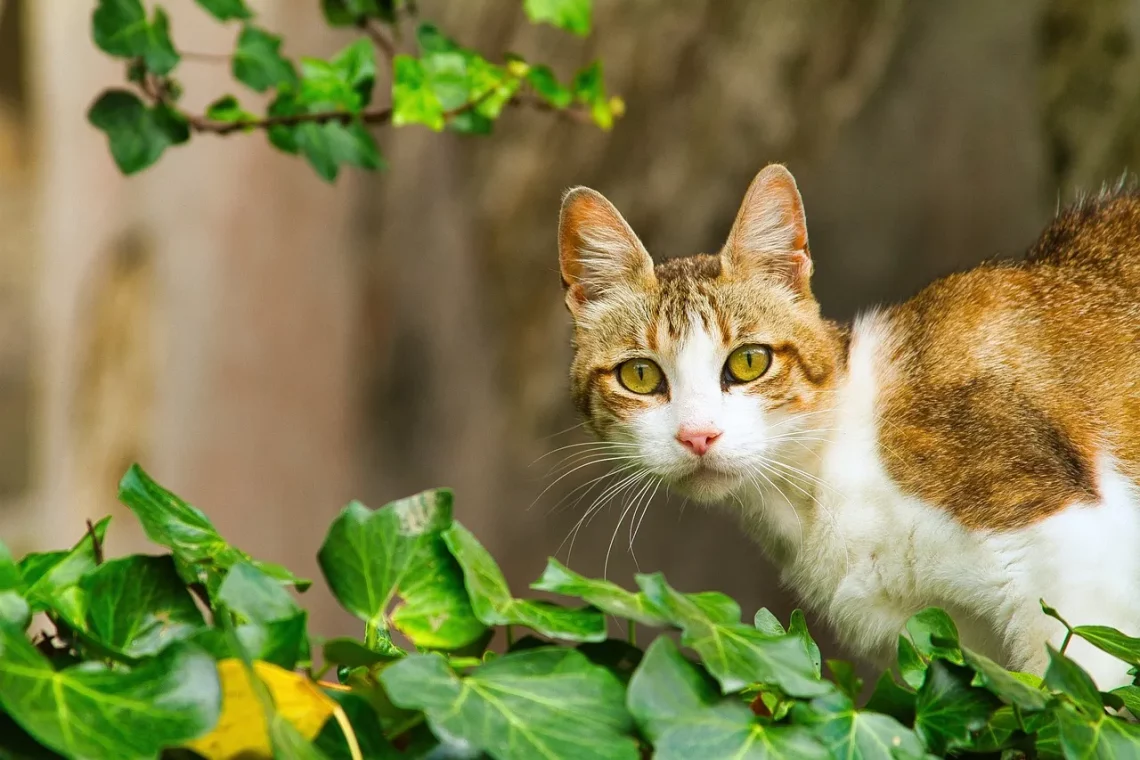
The Art and Science of Breeding Bengals: A Comprehensive Guide
Breeding Bengals is not just a hobby; it is a meticulous blend of artistry and scientific understanding. These captivating cats, known for their distinctive spotted coats and wild appearance, have garnered a devoted following among cat enthusiasts. The breeding process for Bengals requires a deep appreciation for their lineage, genetics, and behavior. Enthusiasts must also navigate the ethical considerations involved in breeding these magnificent animals, ensuring that they prioritize the health and well-being of both the parent cats and their kittens.
The allure of the Bengal cat lies in its unique traits, which stem from a careful selection of parentage. This process not only includes aesthetic qualities but also behavioral attributes. Bengal breeders must have a comprehensive understanding of feline genetics, as this knowledge will allow them to produce kittens that are not only visually striking but also possess desirable temperaments. Understanding the nuances of breeding practices, including selecting the right mates and managing the gestational period, is crucial for anyone serious about entering this field.
In addition to the genetic and aesthetic considerations, successful breeding requires a commitment to responsible practices. This includes ensuring that all cats are healthy, well-socialized, and suitable for breeding. It also necessitates a thorough understanding of the legal regulations surrounding cat breeding, which can vary by location. Through a combination of passion, knowledge, and ethical responsibility, breeders can contribute to the preservation and improvement of the Bengal breed.
Understanding Bengal Genetics
The foundation of successful Bengal breeding lies in a solid grasp of genetics. Bengals are a hybrid breed, originating from the crossing of domestic cats with the Asian leopard cat. This genetic background gives them their striking appearance and unique behavioral traits. Understanding how genetics work is essential for breeders who want to enhance certain characteristics while minimizing undesirable traits.
One key aspect of feline genetics is the inheritance of coat color and patterns. Bengals can exhibit a range of colors, including brown, snow, and silver, each with its own set of genetic markers. Breeders must be well-versed in these markers to predict the potential outcomes of a mating pair. This knowledge allows them to make informed decisions when selecting breeding pairs to achieve specific aesthetic goals.
In addition to physical traits, breeders should also focus on behavioral genetics. Bengals are known for their energetic and playful nature, traits that can be influenced by their lineage. By selecting parent cats with temperaments that align with their breeding goals, breeders can help ensure that their kittens will grow up to be well-adjusted and sociable. This consideration is vital for the long-term success of the breeding program, as it impacts the kittens’ suitability as pets.
Moreover, genetic testing has become an invaluable tool for breeders. Through DNA testing, breeders can identify potential hereditary health issues, allowing them to make more informed breeding choices. This proactive approach not only enhances the quality of the breed but also demonstrates a commitment to the health and well-being of future generations of Bengals.
Responsible Breeding Practices
Responsible breeding is paramount in maintaining the integrity of the Bengal breed. This involves more than just producing kittens; it requires a commitment to the health and welfare of both the parent cats and their offspring. Ethical breeders prioritize the physical and emotional well-being of their animals throughout the breeding process.
One of the fundamental aspects of responsible breeding is health screening. Before breeding, both male and female cats should undergo comprehensive health checks to rule out any genetic disorders or health issues that could be passed on to their kittens. Common health concerns in Bengals include hip dysplasia, heart disease, and certain eye conditions. By ensuring that the breeding pair is healthy, breeders can significantly reduce the risk of passing on these conditions.
Socialization is another crucial component of responsible breeding. Kittens should be raised in an environment that promotes positive interactions with humans and other animals. Early socialization helps kittens develop into well-adjusted adults, which is essential for their future as family pets. Breeders should provide ample opportunities for play and interaction, helping to instill confidence and friendliness in their kittens.
Additionally, ethical breeders adhere to legal regulations regarding breeding practices. This includes maintaining accurate records, ensuring proper licensing, and following guidelines set by breeding associations. By operating within the legal framework, breeders contribute to the responsible management of the breed and help combat the issues associated with irresponsible breeding practices.
Ultimately, responsible breeding is about more than just producing kittens; it is about fostering a love for the Bengal breed and ensuring its future sustainability. By prioritizing health, socialization, and ethical practices, breeders can help maintain the Bengal’s unique characteristics while promoting the overall well-being of the breed.
Creating the Ideal Breeding Environment
The environment in which Bengals are bred plays a significant role in the health and well-being of both the breeding cats and their kittens. An ideal breeding environment is clean, spacious, and designed to meet the needs of the cats. This not only promotes physical health but also contributes to positive behaviors and socialization.
First and foremost, cleanliness is vital. A hygienic environment reduces the risk of infections and diseases, ensuring that the breeding cats remain healthy throughout the process. Regular cleaning routines, including sanitizing litter boxes and feeding areas, should be established to maintain a safe and healthy space.
Space is another critical factor. Bengals are active and playful, requiring ample room to roam and explore. A cramped environment can lead to stress and behavioral issues. Providing a spacious area with climbing structures, toys, and safe hiding spots can help fulfill their natural instincts and keep them mentally stimulated.
Moreover, creating a nurturing atmosphere is essential for socialization. Kittens should be raised in a setting that encourages positive interactions with humans and other animals. This involves spending quality time with the kittens, handling them regularly, and introducing them to various stimuli. A well-socialized kitten is more likely to develop into a confident and well-adjusted adult, making them more suitable as pets.
Additionally, breeders should consider the emotional needs of their cats. Providing a quiet area for the breeding females during pregnancy and after giving birth is essential for their comfort and security. This helps reduce stress and promotes a positive bonding experience between the mother and her kittens.
In conclusion, creating the ideal breeding environment is a multifaceted endeavor that requires careful planning and consideration. By focusing on cleanliness, space, socialization, and emotional well-being, breeders can help ensure that their Bengals thrive and grow into healthy, happy cats.
Marketing and Finding Good Homes for Bengals
Once the kittens are born, the next crucial step is finding them loving, suitable homes. This process involves effective marketing and careful vetting of potential adopters. Responsible breeders take the time to ensure that their kittens go to families that understand the needs and characteristics of the Bengal breed.
Effective marketing starts with a well-crafted online presence. Breeders can use social media platforms, websites, and online forums to showcase their kittens. High-quality photos and videos that highlight the playful and affectionate nature of Bengals can attract potential buyers. Sharing stories and testimonials from previous adopters can also establish credibility and trust.
In addition to marketing, it is essential to have a thorough application process for potential adopters. This can include questionnaires that assess the prospective owners’ experience with cats, their living situation, and their commitment to providing a suitable environment for a Bengal. By vetting potential homes, breeders can ensure that their kittens are placed in environments where they will be loved and cared for.
Education is another critical aspect of this process. Breeders should provide potential adopters with information about the unique traits of Bengals, including their energetic nature and grooming needs. This helps set realistic expectations and ensures that new owners are prepared for the responsibilities of caring for a Bengal cat.
Finally, breeders should maintain a connection with the families who adopt their kittens. This can include follow-up calls or emails to check on the kittens’ progress and offer support as needed. Building a community of Bengal owners fosters a sense of belonging and encourages responsible ownership.
In summary, successfully marketing and finding good homes for Bengals involves a combination of effective promotion, thorough vetting, education, and ongoing support. By taking these steps, breeders can ensure that their kittens find loving families where they can thrive.
In conclusion, breeding Bengals is a multifaceted endeavor that requires a balance of art and science. From understanding genetics and practicing responsible breeding to creating an ideal environment and finding suitable homes, each step plays a vital role in preserving the integrity of this unique breed. Through dedication, knowledge, and ethical practices, breeders can contribute positively to the world of Bengals, ensuring that these beautiful cats continue to enchant and delight cat lovers for generations to come.
Please note that this article is for informational purposes only and should not be considered medical advice. For any health concerns regarding your pets, please consult a qualified veterinarian.




